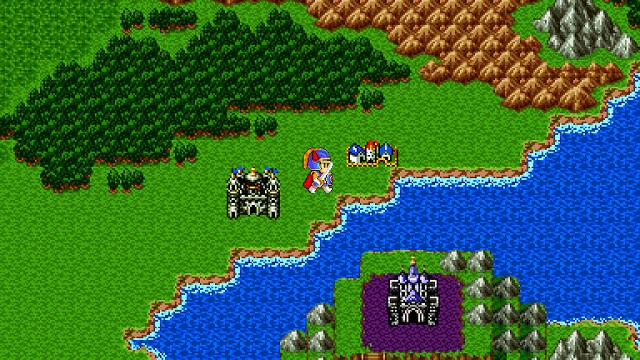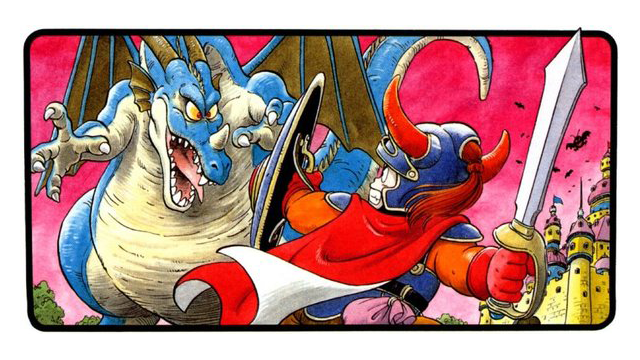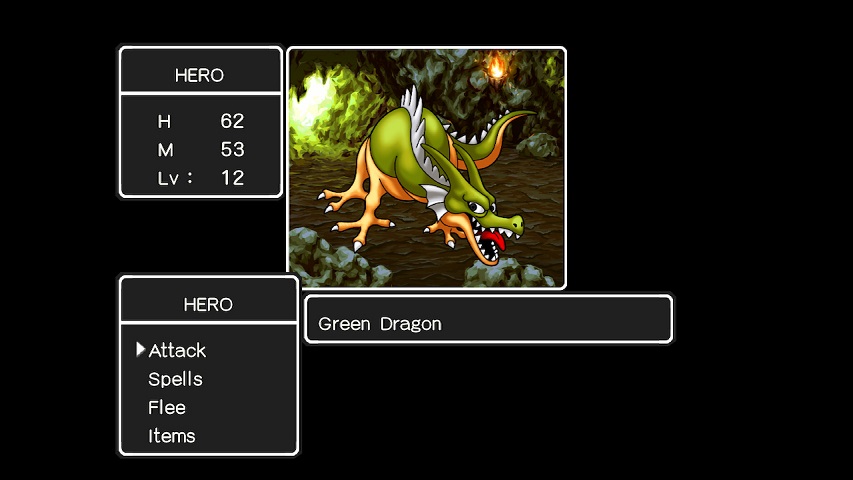What can be said about Dragon Quest that hasn’t already been said? It, along with its cohorts, originated the role-playing-game genre, and it was the first one to appear on consoles. It’s legendary both on its own merits and also for inspiring pretty much every Japanese role-playing-game that came after it.
The game was wildly ambitious in its time, and though some aspects of the game have aged poorly, that’s only because its contemporaries have built on the formula that Dragon Quest created.
I say all of that to say this: reviewing an RPG that came out in 1986 by today’s standards is a bit unfair. Instead, this review will focus on the newly-released Dragon Quest port for the Nintendo Switch, and how it’s been updated for a modern audience.
Unfortunately, Square Enix sure made it difficult for new players to jump in.
Dragon Quest Switch Review: Erred-rick

If you’re new to Dragon Quest, you’ll likely be surprised by the open nature of the game. From the moment you start, there are no forced tutorials. No part of the map is off-limits, save for the final castle. You’re free to visit any of the game’s towns or dungeons at your leisure. The only thing stopping you is all the murderous Akira Toriyama-designed wizards, skeletons, and beasts that want you dead.
Other than that, the gameplay loop will be familiar to anyone who’s ever played an RPG because, well, Dragon Quest invented the gameplay loop. Take on monsters, level up, buy equipment, find items, learn spells, loot dungeons, and eventually save the world. Specifically, it’s your quest to defeat the Dragonlord by building a rainbow bridge to his island fortress and then besting him in combat.
There are a few other unique gameplay hooks in the first Dragon Quest, namely the (relatively annoying) fact that each one of the dungeons is dark, so you need to use a torch to see further than one tile away, and the use of magic keys to open doors around the world. Other than that, any RPG lover will feel very much at home with Dragon Quest, from its random encounters right down to its cheesy-yet-clever Olde English dialogue.
A Quest for a Modern Era
If you’re going into this game knowing that it’s not going to have many, or really any, of the modern quality-of-life advancements that came to the RPG genre after 1986, you’re likely going to be satisfied plunking down $5 to experience this five-ish-hour piece of history.
But that’s not all you’re getting here. This game has been updated in a variety of ways to appeal to a modern audience, and the most notable change is in the visuals. This is generally a matter of taste, but I typically prefer the original blocky, pixelized feel to the ultra-smoothed-out art style of many modern remakes. That said, the upgraded enemy portraits and battle backdrops are a delight, bringing Akira Toriyama’s original designs to life in a new way.
There are a few other quality of life changes, too.
Prices of magic keys have been reduced, and spell names have been changed to make them a little clearer. There’s also a quick-save system, meaning you don’t have to trek all the way to the castle to save your game. In a baffling move, however, the game hides it in the “Misc.” section of the menu, along with a group of tutorials that take new players through the game’s mechanics.
The game never tells you that this is where the save function and tutorials are, so they’re pretty easy to miss. It’s hilarious that the tutorial you already found in the “Misc.” menu tells you explicitly to check out the “Misc.” menu because it’s easy to miss.
Dragon Quest Switch Review — The Bottom Line

Pros:
- Dragon Quest is legendary for a reason
- The remastered battle visuals are great
- The remastered music is great
- It’s $5
Cons:
- Despite not being a faithful remake, the game offers very few quality of life updates
- The general sprite aesthetic could be a turn-off for some
Given the small tweaks made to the game in advance of its release on the Switch, it’s baffling that Square left certain other aspects of the game alone.
Your inventory is laughably small, and the only way to expand it is to sock your items away in a vault in one specific town. There’s no way to deposit or retrieve these items without trekking all the way back to town.
There’s no fast travel either, which would be fine except for the fact that frequent random encounters make necessary treks back to a castle or town frustrating. Adding to this frustration is the fact that when you do get to a town to buy items, you can’t purchase keys or healing items in bulk. You have to buy them one at a time, in distinct transactions.
It’s a death by a thousand cuts. None of these issues are damning on their own, but given the other tweaks made to the game before its release, it means that Dragon Quest for the Switch now occupies a strange remake middle ground. The visual changes and quick-save function mean that it’s not intended to be a faithful recreation of a classic RPG, so the question then becomes, “Why did the developers not go one step further to make the game friendlier and less frustrating?”.
The bottom line is that even with these issues, Dragon Quest is still worth the $5 you’ll spend on it. It’s legendary for a good reason, and playing through it is cozily nostalgic, even if you didn’t play the original back in 1986. It’s just frustrating that the team behind the Switch version didn’t lower the barrier of entry.
[Note: A copy of Dragon Quest was provided by Square Enix for the purpose of this review.]








Published: Oct 3, 2019 09:13 pm